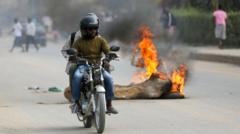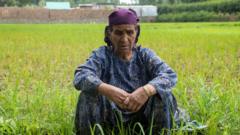A small group of Mennonites from Mexico has settled in northeastern Angola as part of an agreement with a diamond company, leading to significant agricultural changes in the region and raising land ownership fears among locals.
The Mennonite Migration: A New Chapter in Angola's Agricultural Landscape

The Mennonite Migration: A New Chapter in Angola's Agricultural Landscape
The arrival of Old Colony Mennonites in Angola has sparked both hope and concern among local villagers as they reshape agricultural norms and land use.
In a surprising turn of events, eight families from the Old Colony Mennonite community have made the journey from Mexico to Angola's northeastern region. With nearly 60 members settled, they aim to cultivate a new agricultural landscape while engaging in a partnership with a local diamond mining company. Their arrival has prompted mixed reactions, fostering growth prospects for agricultural development but also escalating tensions among local villagers.
Charlotte Itala, a resident of the nearby village of Cambanze, expressed concerns regarding the land transition from a fertile hunting ground to cultivated fields. The once abundant landscape that provided antelope, boar, and buffalo has now largely been repurposed by the Mennonites, who are utilizing approximately 2,000 acres for their farming endeavors. This shift, while potentially beneficial for economic activities, alarms many locals fearing disruption to their livelihoods and food sources.
Using shipping containers as makeshift homes, the Mennonites have begun the labor-intensive process of farming, which has generated both admiration and anxiety within local communities. While some villagers appreciate the economic opportunities brought forth by the Mennonites, others, like Ms. Itala, worry that the changes may jeopardize their access to resources.
As they adapt to this new environment, the Old Colony Mennonites harbor hopes of creating a sustainable community that may attract more members from their faith. However, the influx of foreign settlers raises pressing discussions about land rights, cultural assimilation, and long-term implications for local populations who rely on traditional farming techniques.
Local sentiments remain divided; some Angolans welcome the influx of new farming techniques and possible economic benefits while others caution against potential displacement and cultural dilution. As both communities navigate this complex transformation, the unfolding situation in Angola could serve as a compelling case study of globalization's impact on indigenous practices and regional dynamics.





















